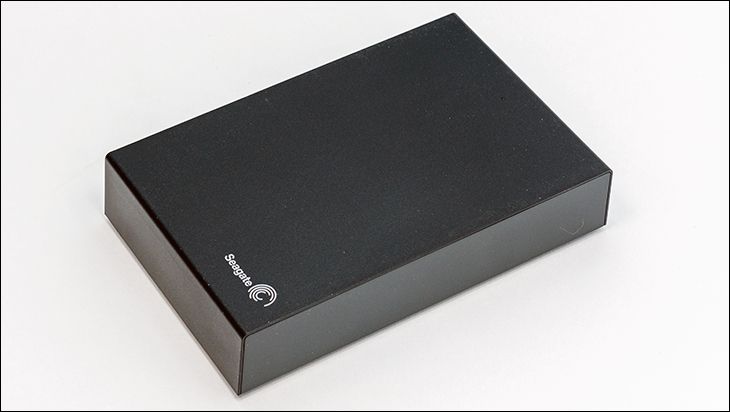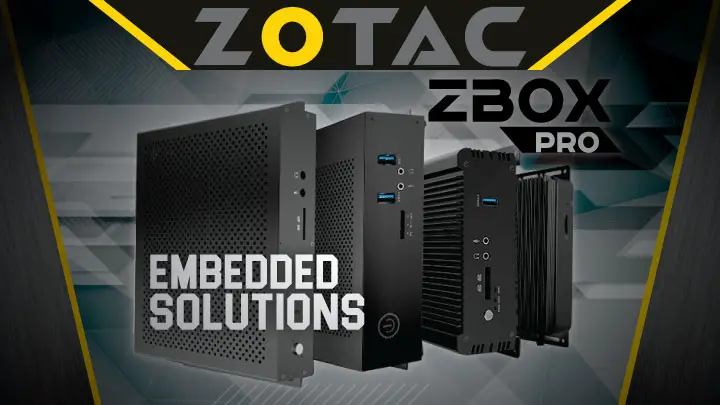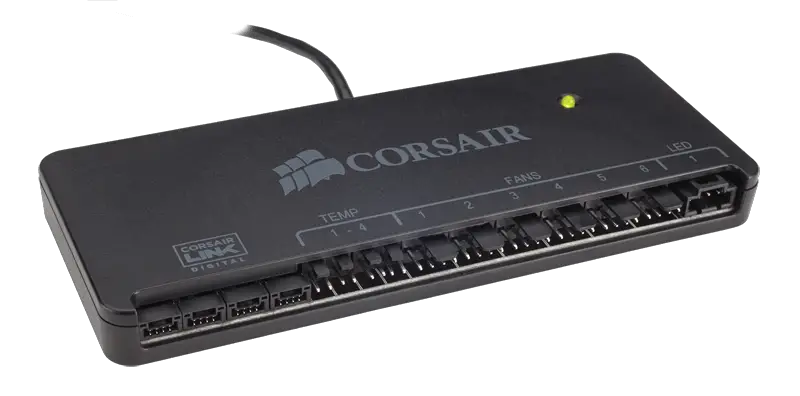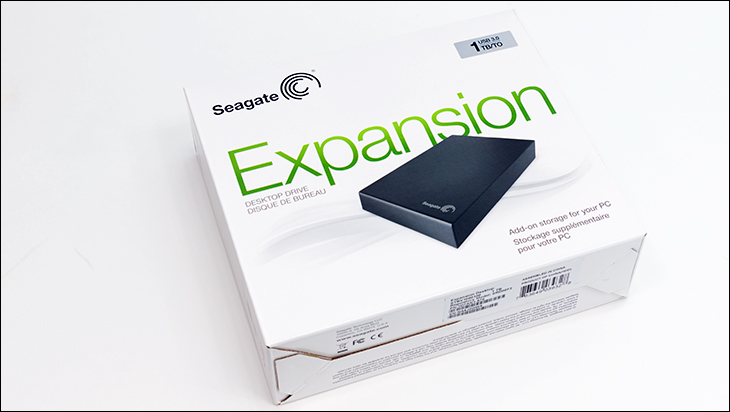
As this can be considered an older variation on the Expansion Desktop theme, it should come as no surprise that its shipping container is slightly different than the 8TB model we reviewed a while ago. Make no mistake, this is not a bad design or poorly thought out shipping container. Instead it just is a tad more conservative in its aesthetics while still providing all the information one would need to make an informed decision. It just will not standout on crowded brick ‘n’ mortar store shelves like its more colorful cousins.
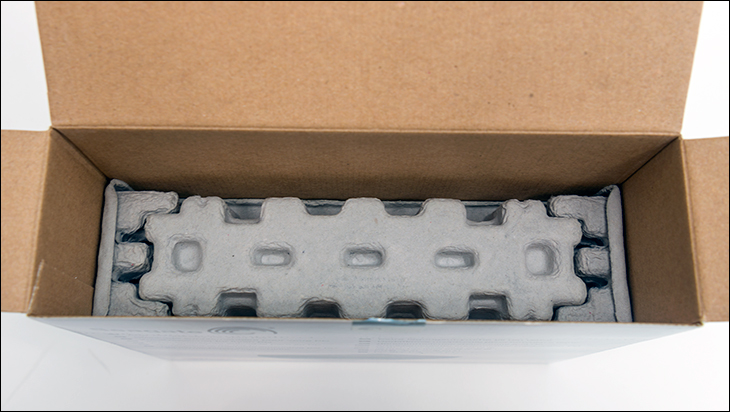
The same is true of the internal protection this model has to offer. Seagate uses large ‘eggshell’ cardboard packaging to keep the drive secure, and away from the edges of the box. They also include all the accessories in a secondary cardboard box that resides on the top of the drive. This combination means that the 1TB Seagate Desktop Expansion drive will arrive safe and sound even if the box gets hammered by mister shipping agent(s) while in transit. Be it across town, across country, or around the world this external storage solution should arrive safe and sound.
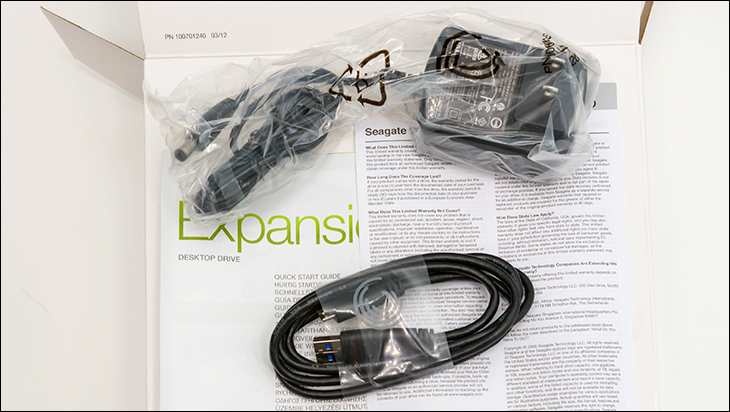
The included accessories are for all intents and purposes the same across the entire old and new Expansion Desktop line-up. That is to say you will find all the necessary items included, but no goo-gaws or dross. So, if you really have your heart set on a fancy cardboard poster or door hanger… the Seagate Expansion Desktop series is not right for you. Instead if you just want a good accessory list this drive will have you covered. In grand total, expect to find a nice 18-inch long USB 3.0 Type A to micro-USB cable, warranty/installation pamphlet, and a power brick inside the small secondary cardboard ‘accessory’ box.

As you can see the 1TB variant of the Expansion Desktop series takes a different approach to aesthetics than the 8TB model we reviewed. Basically, instead of just being a black box with some funky ‘diamond tread’ patterning to the top, the 1TB model goes for a bit more angular look. Almost as if it is straining at the starting gate to move. This actually is a fairly apt metaphor for this model – but we will get to the internals in a moment.
Even if you are not into black, plastic boxes this design does have a few things going for it. Firstly, is the copious amounts of ventilation cutouts in it. This will let the high(er) performance hard drive housed inside comfortable and keep it from baking in its own juices like some other external HDD models. Mix in small, but very grippy, rubber feet for both anti-slip and anti-vibration abilities and the exterior chassis will not win any art awards, but it does get the job done… and does so with a dash of style that is classic Seagate.

Whether you like the exterior design or not, there are a few downsides. The first is the lack of a physical on/off switch. Desktop / 3.5-inch HDD based external storage solutions are not meant to be portable. They are meant to live the majority of their life on your desk right next to your computer. While yes, the drive will spin down (almost aggressively so in the case of the 1TB Expansion Desktop model) nothing beats a ‘cold drive’ for surviving a random bump or knock. As it stands you will either have to physically unplug this device from your 120v mains outlet when you do not plan on using it all that often, or plugging it into a power bar with its own on/off switch. Both are sub-optimal compared to an on-board power switch.
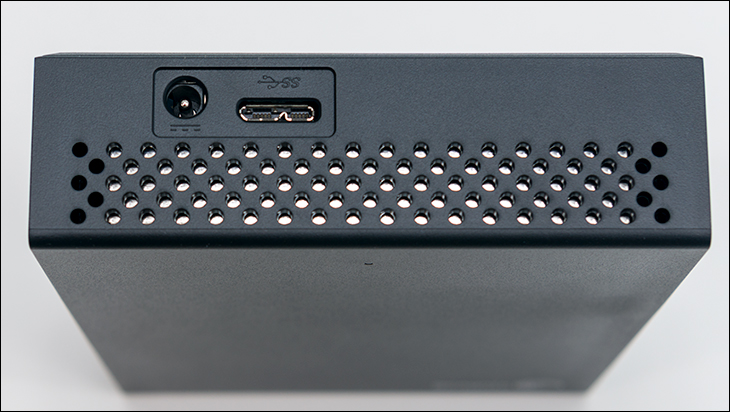
The other design choice we take issue with is not the older micro-USB 3.0 port. This port is a tried and true option, offers a lot less compatibility issues compared to Type-C ports… and yet offers access to a bus that is more than up to the task of handling a single 3.5-inch HDD levels of performance. No. What we take issue with is the lack of four more rubber feet. Unlike its bigger (and newer) brethren the 1TB Expansion Desktop does not offer horizontal and vertical orientation abilities. Instead it is only meant to lay flat on your desk. This is a touch sub-optimal as a ‘tall but narrow’ orientation usually offers slightly better passive cooling and can be tucked into areas that a ‘short but fat’ device will not fit. This is a personal preference and you may feel differently… but the lack of four more rubber feet is a down right odd corner to cut.
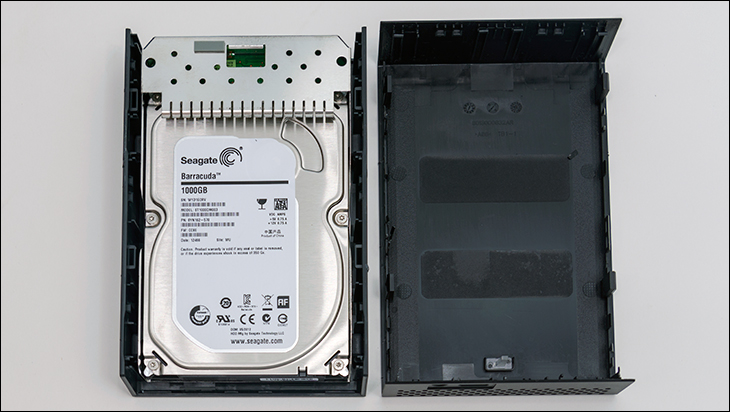
Shucking this drive is simplicity itself. In grand total there is zero screws holding both pieces of the exterior plastic chassis together. Instead it is just a bunch of plastic clips that are easily separated with any handy-dandy spudger.
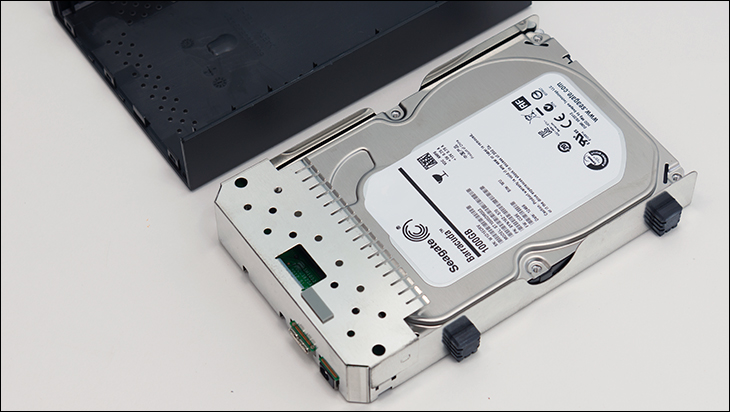
Seagate certainly took cooling seriously with this model, as the HDD is covered on all but the top in form-fitted pressed aluminum. Aluminum that is attached to the drive via four screws on the sides (hidden underneath the rubber bumpers), and two that secure the PCB in place. This combination works well at both cooling and ensuring both the drive and the adapter PCB plugged into the SATA data and power ports stay safe, and stay connected to one another.
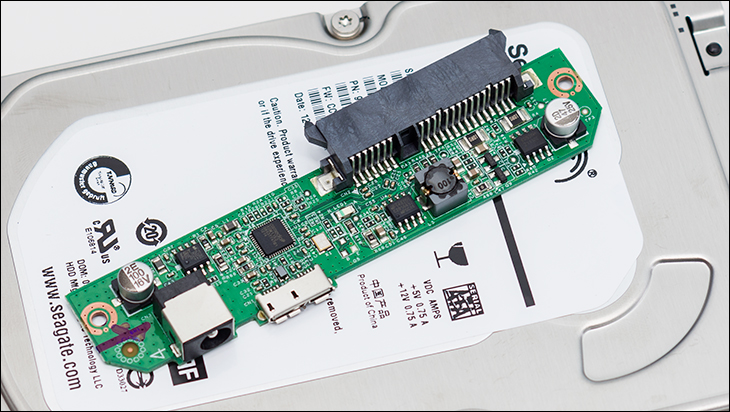
The PCB itself is pretty much what we have come to expect from Seagate Hard Disk Drive models. That is to say it is small, uses a decent (if somewhat old) ASM1153 USB to SATA bridge IC and generally speaking ‘just works’. Interestingly enough, this model’s PCB is not covered in EMI foil tape like the larger models are. Of course, as it is secured in place via the aluminum heat spreader, and said heat spreader will act as an even better EMI shield we have almost no issues with this difference.
Our sample of the Seagate 1TB Desktop Expansion makes use of a Seagate BarraCuda 1TB 3.5-inch drive. Specifically, the ST1000DM010 variant. This is very, very important and very, very impressive to see. This particular variant is not like the typical non-Pro ‘Cuda you have all come to know in the past few years. Instead, this bad boy is both 7200RPM and PMR based… and not 5400RPM and SMR based. That combination will give this particular Expansion Desktop a rather nice edge over its larger siblings to say the least. Specifically, while it is only a single platter based hard disk drive it is competing against a lot of various external storage solutions that either use Shingled Magnetic Recording (SMR) or are 5400RPM drives… or both.

As the name suggests SMR overlaps its tracks on the platter – much like shingles on a roof. While it certainly increases areal density, both read and write performance does take a bit of nose dive once the included CMR track ‘write buffer’ is exhausted. To imagine this difference between CMR and SMR in the real world… imagine two modern solid state drives. Both using the same controller and are exactly alike except for the NAND it uses. One uses MLC and the other QLC. Now imagine the performance difference between the two when the QLC drive exhausts its pseudo-MLC write buffer. That basically is the relative performance difference between CMR and SMR hard disk drives (of the same generation and rotational velocity). This combination of faster rotation speed with faster platter tech more than makes up for the fact that this 1TB ‘Cuda hard drive uses a rather small (by today’s standards) 64MB of onboard cache (which predates Seagate’s Multi-Tier Caching Technology) and an older/slower controller.

As an aside, the typical rule of thumb with Seagate internal HDD models is count the number of digits after the last letter in the model. If its three it could be an older model but probably is SMR (e.g. ST8000DM004 found in the 8TB Expansion Desktop series), if four digits it is probably CMR (e.g. ST8000DM0004 a 8TB Seagate BarraCuda Pro drive) but like any rule of thumb it has exceptions. This older model is one of the few exceptions that prove the rule (of thumb). Please do not take this rule of thumb as gospel truth. It obviously is not always accurate. Thankfully, Seagate has recently released a handy dandy list here (https://www.seagate.com/ca/en/internal-hard-drives/cmr-smr-list) so there really is no need to guess. It just is eye brow raising to see a three-digit model that is both old and part of a SMR series…almost as if the smaller 1TB models are not worth the effort of refreshing these days. Further reinforcing this opinion is the fact that this ‘Cuda drive was released back in 2016 and has survived multiple refreshes.
We bring this up because it does explain why it is older, uses PMR not SMR tech, runs at 7200rpm and not 5400RPM like newer BarraCuda models… and why it does not use PMR+ with Two-Dimension Magnetic Recording (TDMR) Tech. As we have gone over in past (internal) Seagate Hard Disk Drive reviews, PMR+ with TDMR means each arm does not have two r/w heads on it (one per side of platter) instead they have four (with two r/w heads per side of the platter). This newer technology increases performance, reduces SNR and increases error correction abilities of a given drive. The lack of this newer tech is also why this particular Seagate BarraCuda drive is rated for a error rate of one bit per 10E14 and not 1bit per 10E15 worth of reads.
For an external drive this means very little as 10E14 is 125TB worth of reads (in Scientific Notation speak), or a full 125 drive reads for this particular Seagate Expansion Desktop model. Still not as good as newer models with 1 in 10E15 (or 1,250 full drive reads) but that is one of the tradeoffs you are going to be making. Basically, do you want a faster (7200rpm) drive with more consistent performance (CMR)… or do you want one that is more advanced in its ECC but is slower (5400RPM) with potentially more random levels of performance (SMR)?
Beyond the lack of dedicated power switch, and the copious use of plastic we can find no major concerns nor issues with the 1TB Desktop Expansion model. This is a good thing. Now, let’s find out if it actually lives up to our hopes in the performance department.
